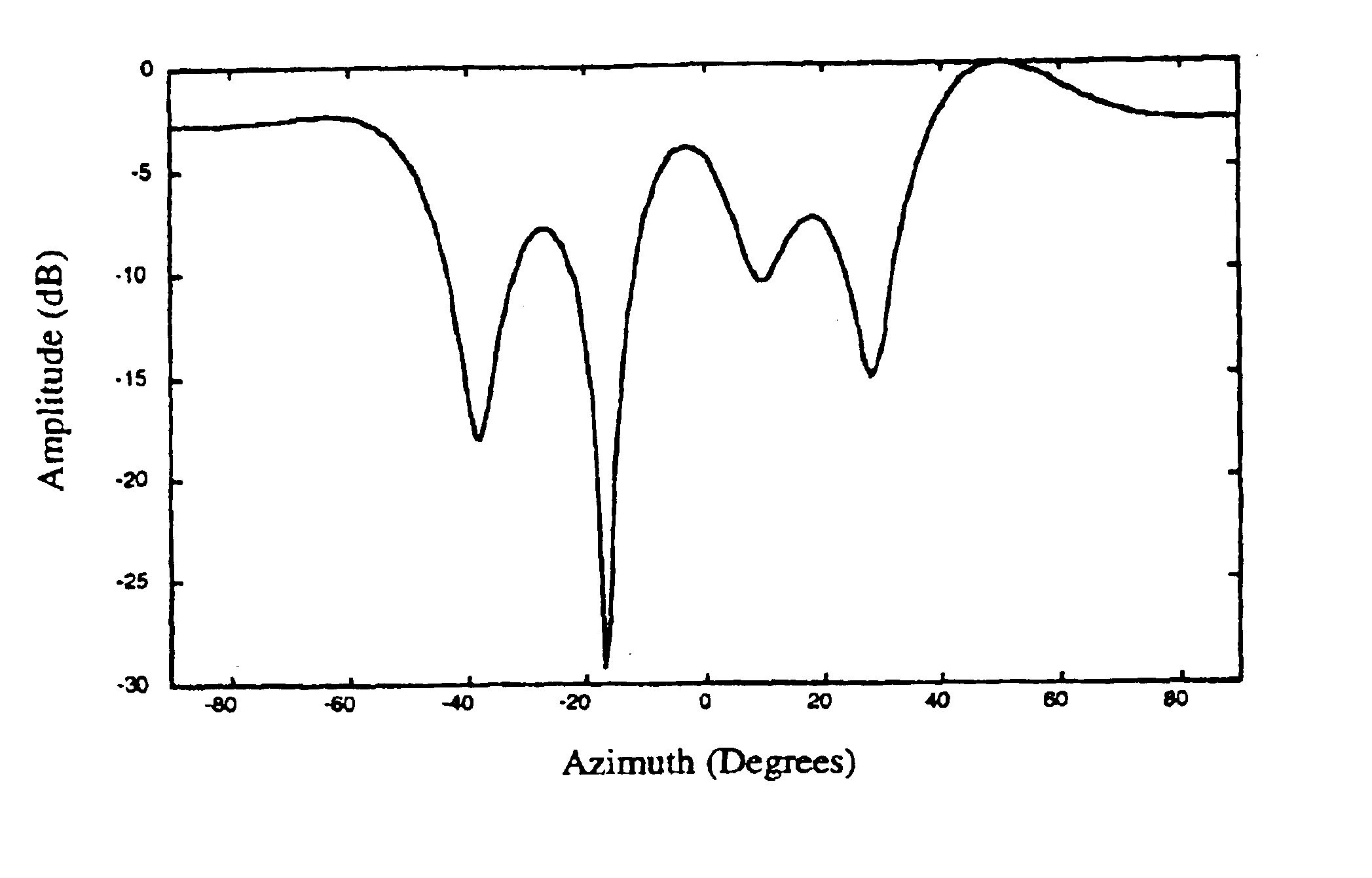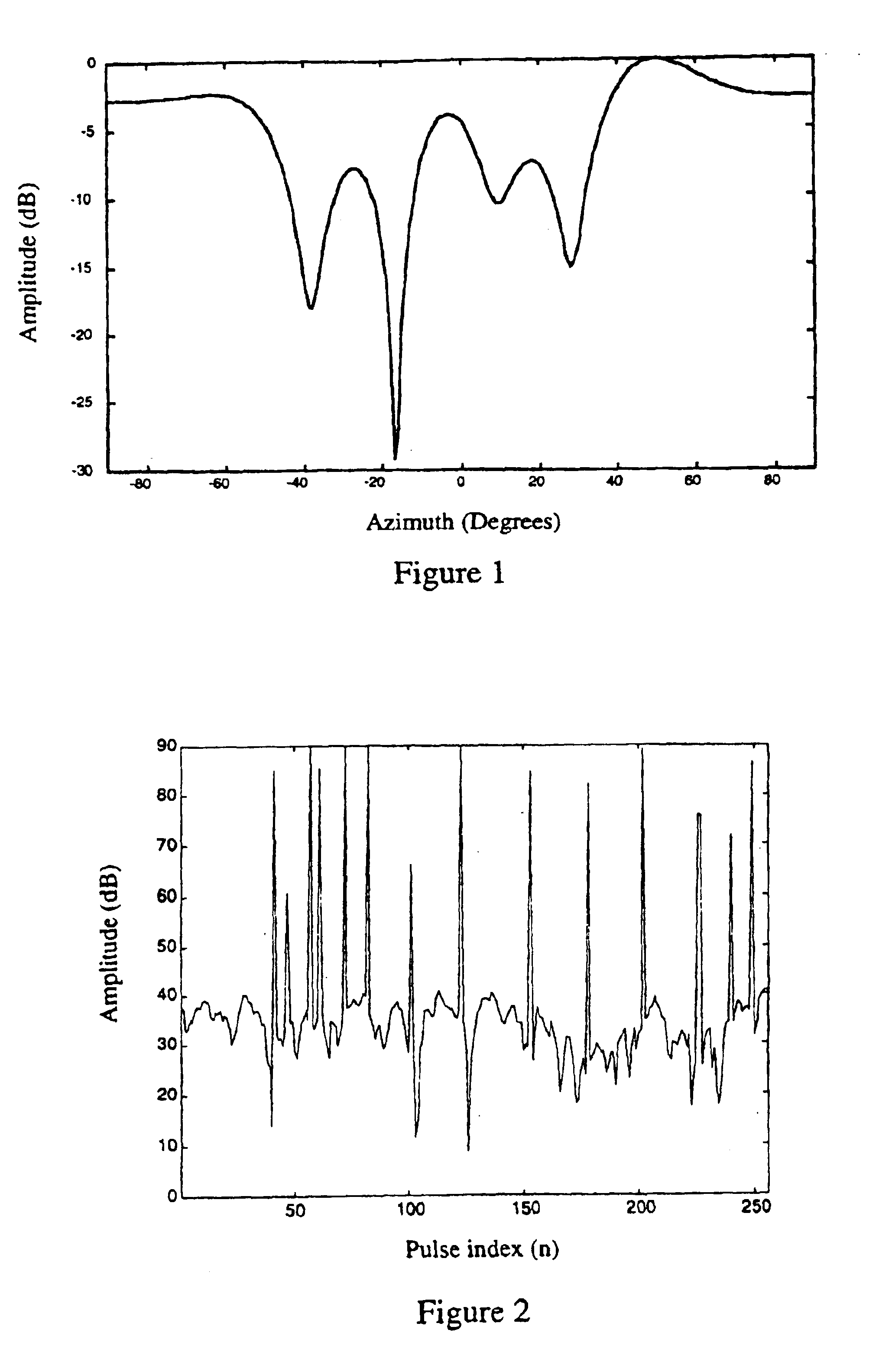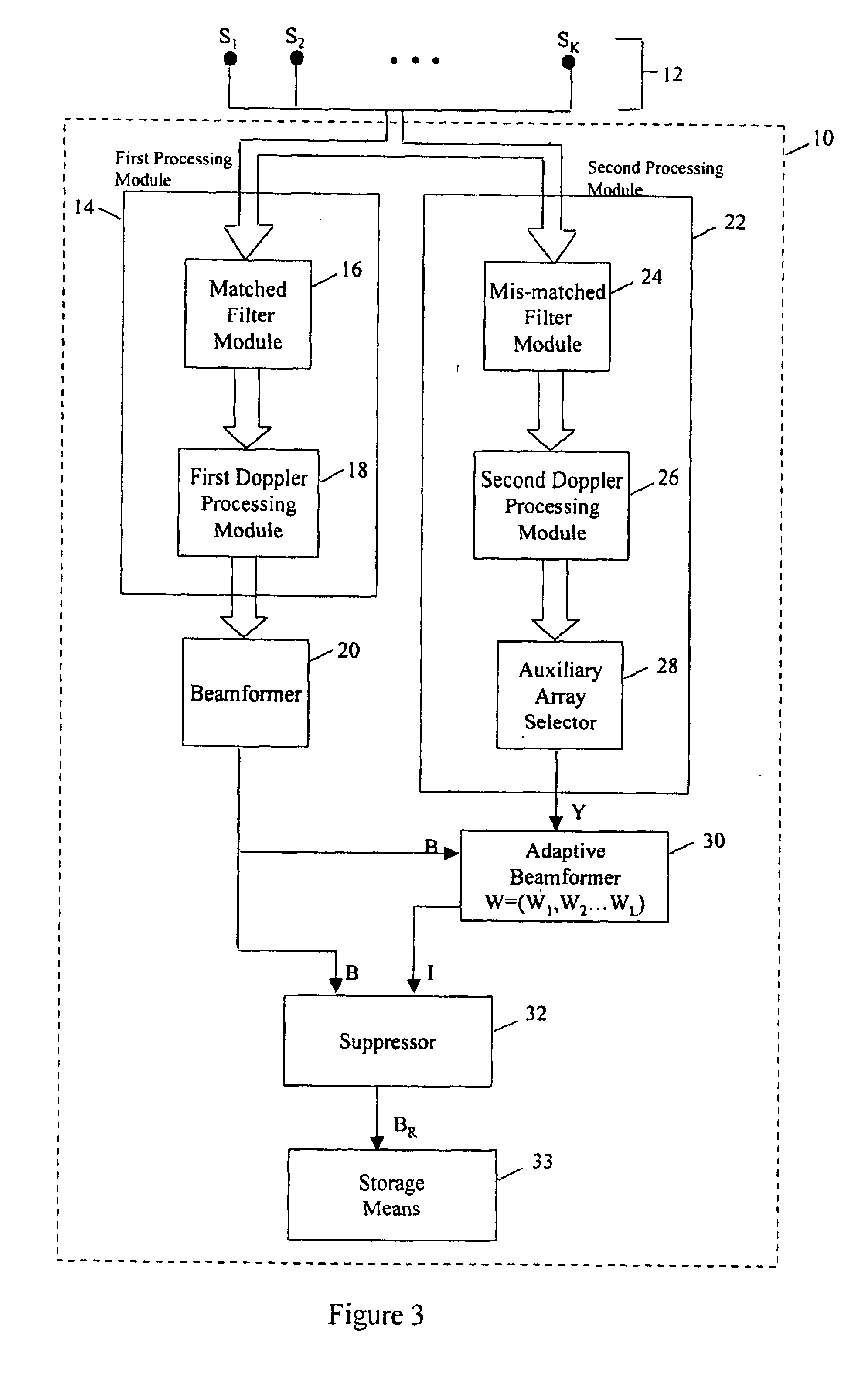Noise suppression system and method for phased-array based systems
a phasedarray and suppression system technology, applied in the field of phased-array based systems, can solve the problems of reducing radar data complexity, affecting the detection process, and avoiding azimuthal degradation, so as to avoid the effect of azimuthal degradation
- Summary
- Abstract
- Description
- Claims
- Application Information
AI Technical Summary
Benefits of technology
Problems solved by technology
Method used
Image
Examples
Embodiment Construction
All of the experimental data shown herein has been taken from the SWR-503™ HFSWR system located at Cape Race, Newfoundland, Canada. The SWR-503™ HFSWR system was developed by Raytheon Canada Limited. The SWR-503 HFSWR system comprises a receiving antenna array having 16 antenna elements (i.e. a main sensor array having 16 sensors).
As used herein, each of the terms “range data”, “doppler data”, “azimuth data”, “sensor data” or “pulse data” denotes a one-dimensional series of data points in a given domain. Furthermore, the term “range-doppler data” denotes two-dimensional data for a given azimuth or for a given sensor and the term “range-sensor data” denotes two-dimensional data for a given doppler value or a given pulse index. In addition, the terms “range-pulse-sensor”, “range-doppler-sensor” and “range-doppler-azimuth data” denotes three-dimensional data. Furthermore, the term “a portion” of data means that the portion of data has a dimension smaller than the data from which it was...
PUM
 Login to View More
Login to View More Abstract
Description
Claims
Application Information
 Login to View More
Login to View More - R&D
- Intellectual Property
- Life Sciences
- Materials
- Tech Scout
- Unparalleled Data Quality
- Higher Quality Content
- 60% Fewer Hallucinations
Browse by: Latest US Patents, China's latest patents, Technical Efficacy Thesaurus, Application Domain, Technology Topic, Popular Technical Reports.
© 2025 PatSnap. All rights reserved.Legal|Privacy policy|Modern Slavery Act Transparency Statement|Sitemap|About US| Contact US: help@patsnap.com



